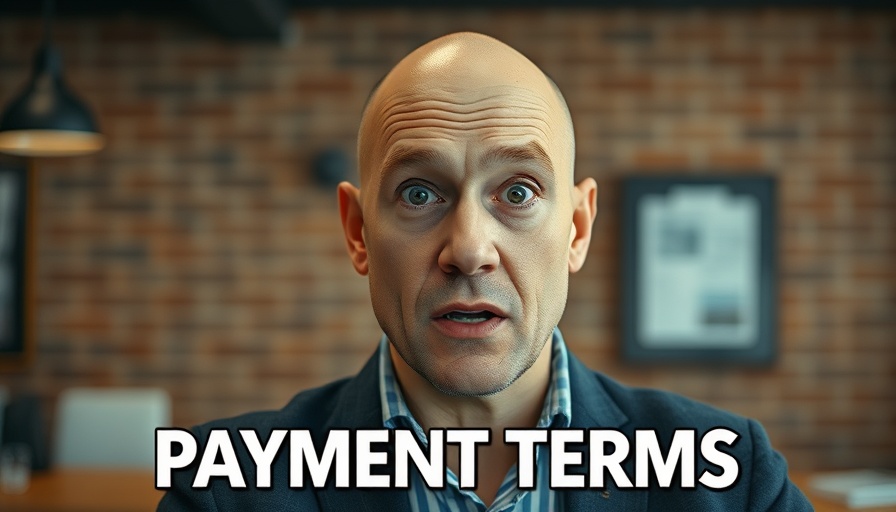
Understanding the Impact of Payment Terms on Your Finances
Many of us have faced the dilemma of managing due dates and payment periods, especially when it comes to bills, loans, or rent. In the world of finance, something as simple as the length of time given for customers to pay can dramatically affect not just the debtor but also the creditor. A recent video titled Careful How Long You Give Your Customers To Pay delves into this intricacy, and the implications are significant for individuals seeking financial stability.
In Careful How Long You Give Your Customers To Pay, the discussion dives into the complexities of payment terms, exploring key insights that sparked deeper analysis on our end.
Why Payment Terms Matter
At the heart of this topic is the psychological and financial impact on consumers. The longer you give someone to pay, the more they may procrastinate. For many individuals, particularly those juggling debt and financial anxiety, an extended payment deadline might feel like a safety net. However, it can easily morph into a cycle of non-payment or delayed responsibility. While it’s tempting to provide extended terms to foster goodwill, it often results in cash flow issues for businesses as well. Striking a balance is essential.
Real-life Consequences of Extended Payment Terms
Consider a scenario where a tenant in the UK is given a month of grace to pay their rent. Initially, this seems generous, yet it can lead to a two-month delay in receiving funds, making it difficult for landlords to meet their own financial obligations. On the flip side, tenants may feel a momentary relief that quickly dissipates into a sense of accumulating financial burden. Understanding these dynamics helps paint a clearer picture of the consequences tied to payment timelines.
A Balancing Act: Short vs. Long Payment Terms
Shorter payment terms lead to quicker cash inflow but can induce panic among consumers. If you're a renter or low-income earner, a sudden demand for payment can exacerbate existing anxieties, perpetuating a cycle of financial stress. Alternatively, extended terms may offer a softer approach, but they risk eroding the urgency to pay. The challenge lies in finding a middle ground—one that encourages prompt payments while being sympathetic to the realities of budgeting dynamics.
Tips for Navigating Payment Deadlines Wisely
How do you make the most out of your payment structures? Here are some practical tips:
- Expectancy vs. Reality: Establish clear timelines that are realistic yet assertive. When giving payment terms, manage both parties' expectations.
- Communication is Key: If you foresee challenges in meeting deadlines—whether you're the lender or borrower—honest communication can help avoid unpleasant surprises.
- Know Your Limits: Only offer or accept terms you can comfortably manage. If unsure, consult with financial advisors.
Aligning Payment Terms with Financial Goals
When thinking about payment terms, consider aligning them with your financial goals. For example, if you’re aiming to save for a down payment or pay off lingering debts, your focus should be on creating a budget that reflects your priorities. Account for all liabilities, including any payment terms you're agreeing to. This strategic planning ensures you don’t overspend on essential living expenses or inadvertently create more stress through poor financial choices.
Take Action: Shaping a Healthier Financial Future
Being met with debt, confusion over taxes, or financial anxiety can feel overpowering. However, understanding the implications of payment terms can pave the way for better decisions. If you're struggling, consider reaching out to financial counselors or community resources tailored to helping individuals through tight financial situations.
Don't wait for the perfect moment—start taking steps today to reshape your approach to payment deadlines. Propel your financial journey forward, seeking clarity and support anytime you encounter obstacles.
 Add Row
Add Row  Add
Add 




Write A Comment